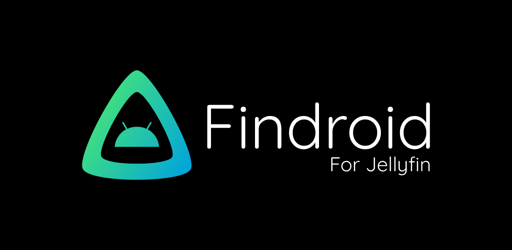Love findroid, it just feels good. Only disadvantage is no random play/shuffle but other than that I like it very much, it’s nicer than the og jellyfin app/web wrapper
Offline playback / downloads
Dope. Aside from the usual, outside of wifi situations, if your networking skills are (like mine) not to the point of confidently, and securely opening ports, this is a great stopgap. It’s a nice-to-have feature that’s missing from the official app, last I checked.
I think the official app does let you download but its literally a file on your phone. So you need a file manager and a video player that can play your file in addition. There is generally no management of downloads or a way to see what you downloaded in the official app.
Findroid improves on this massively, I however keep having the issue it doesn’t seem to download images from the library, so all my downloads are grey boxes. Just a cosmetic issue though as they all play fine.
Honestly, I know Emby gets a lot of hate due to its background but this is why I enjoy it so much. The emby app for android is very well polished.
I use Symphonium for a year now and it is all I ever needed. Has all bells and whistles, great support and all of the features you could wish. A huge step up from the native app or even findroid and the likes.
What are the advantages over the regular jellyfin app? Seems like it maybe does less?
the regular jellyfin app is just a web wrapper, at least it behaves like and looks like it, as for advantages, it’s the little things, like offline playback, double tap to skip like in youtube etc.
Interesting because the jellyfin app can double tap to skip as well as download media for offline playback.
I have both and UI seems like the only difference between the two (findroid looks MUCH better) except you have no access to any admin, profile, or library settings or functions (like scanning for new media or fixing metadata) in findroid.
Multi-server and multi-user use also seems better UX-wise on findroid, though I doubt that is a super common use on a single phone.
The official app does download files for offline viewing, but it downloads the file to your downloads folder, like a web browser.
Findroid downloads the file to the apps internal storage and plays it back in-app.
Some other platform-native third party JF apps like JellyFlix and Streamyfin allow you to transcode your downloads for smaller files, different resolution, and file compatibility. They also download to the app storage and play back in-app
Might just be me, but I don’t like double tap to skip. Findroid has another scrubbing method I’ve not seen anywhere else but I wish it were the standard.
When you drag your finger to the right, it says how far you’re about to skip ahead. The longer your swipe, the further you go. When you release, it scrubs to that timestamp. Same with going backwards.
I find it faster, more accurate, and more versatile. The only thing I don’t like about the Findroid player is the UI timeout is twice as long as I need it to be.
Oh, VLC for Android scrubs like that too!
Findroid does less, but what it does, it does better (imo).
In addition, Findroid supports jumoog’s Intro Skipper and Trickplay, which isn’t available in Jellyfin Android.
The major missing feature is transcoding support.
I’ve been using findroid. And honestly this has captured my opinions exactly. If you’re using the official Jellyfin app, I’d urge you to try Findroid. It does many things very well.
Just a personal use case, maybe it isn’t an advantage. But the official android app is just a web wrapper and the use of MPV as external player don’t allow self-signed local certificates (and they never will…).
Findroid does the job for you while using MPV under the hood and you can connect to your local DNS with self-signed certs without any issues :).
I have no issues connecting to my server when using my local DNS and self-signed certificates with the normal app either, or perhaps I’m misunderstanding you.
Ohhh? I tried to make it work even adding the certificate into de
/datafolder of MPV (rooted android) but it didn’t worked… (source)I remember I even checked the logs via ADB and while I can’t remember the exact error logs, it wasn’t accepting my certificate.
Also android MPV is the only application on Android that doesn’t accept my self-signed certificate. Navidrome, HTTP shortcuts, bitwarden, Tempo… They all accept without any problems.
If you have some juicy info to share I’m all ears 👍 !!
Edit: It’s probably related to android 14 (god I hate it here…) But can’t revert to 13… The Stock firmware builds are Bitwise different.
- Direct play only, (no transcoding)
The app sounds great but this is for me a critical missing feature.
May I ask why? Maybe I haven’t been in your actual case so I probably can’t relate.
However having everything in a format that every device can read and disable transcoding on jellyfin, saves resources and power usage.
For some content DirectPlay is just not possible, as much as I’d love it to be.
More complex stylized subtitles will absolutely trash almost any Android device unless transcoded.
Being able to stream my shows on an unstable or lower bandwidth internet connection like on a train (which is where I really enjoy watching it) is impossible if I am streaming the raw files. I usually watch 480p or 720p on the go but enjoy the 1080p quality when watching from home.
Also, downloading a 1080p file takes significantly longer and takes up much more space than a 480p or 720p. My phone has no memory card and despite having 128GB internal storage, it is scarce. For a while, in the morning I was downloading my episodes before heading out, but really needed to luck out to get the episodes before I needed to catch the train (as the native jellyfin client does not allow downloading the transcoded files). You could argue I should adapt my habits to my means but I frankly really think it should be the other way around, and transcoding solves that for me.








